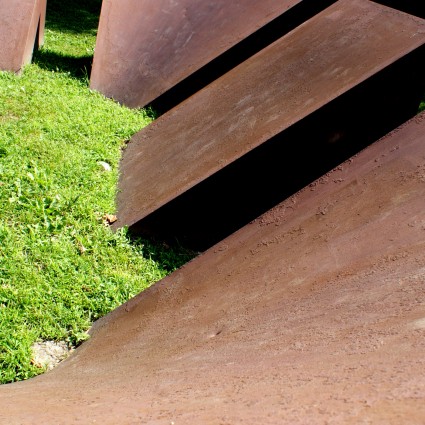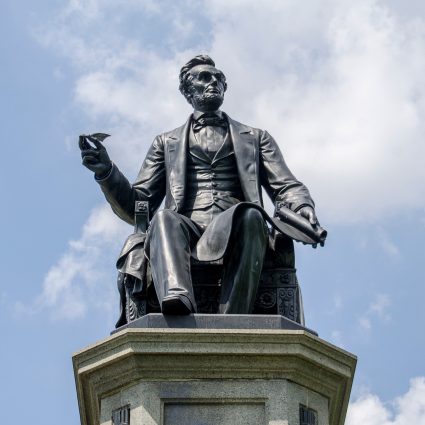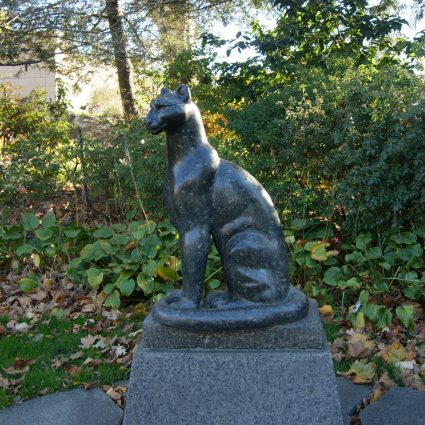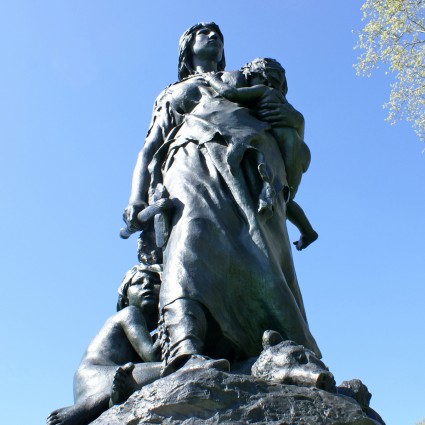At A Glance
The male figure was originally known as Allegory of the Schuylkill River in Its Improved State
The female figure was originally known as Allegory of the Waterworks
Since 1937, the Spanish cedar originals have been preserved inside the Philadelphia Museum of Art
The Fairmount Park Art Association (now the Association for Public Art) had copies of the sculptures cast in white fiberglass in conjunction with the renovation of the Water Works
As the Fairmount Water Works expanded in the 1820s, a wonder of contemporary engineering and a famous public garden, the city’s Watering Committee decided to embellish the site with emblematic sculpture. The members did not have to look far for an artist because William Rush, the foremost American sculptor of his era, served on the committee.
Since 1937, Rush’s Spanish cedar originals have been in the Philadelphia Museum of Art.
Rush designed two sculptures to be placed atop the entranceways to the new Fairmount millhouse, where visitors descended for a dramatic view of the gigantic water wheels churning below. The male figure, The Schuylkill Chained, was originally known as Allegory of the Schuylkill River in Its Improved State – a title that gives a clearer idea of Rush’s intentions. The female figure was originally called Allegory of the Waterworks. The allegory of the “improved” river draws on traditional representations of river gods, but Rush’s wild old man with flowing beard – the arms scarcely restrained by the chains of civic improvement – has a unique energy and strength.
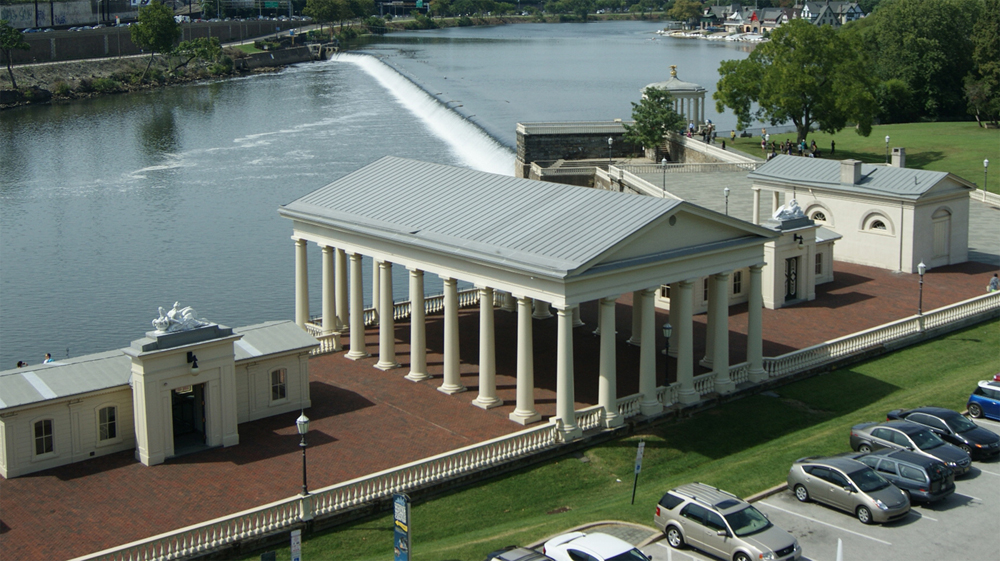
Around the figure the waters gush out in many directions. Beside his feet is an American eagle, wings outspread. The female figure forms a sharp contrast. This classical young woman holds one graceful hand above a water wheel as if to demonstrate its elegance and power. Behind her, a large vase represents the Fairmount resevoir. Even her platform of bolted steel indicates the artifice of civilization.
Since 1937, Rush’s Spanish cedar originals have been in the Philadelphia Museum of Art. In 1980, the Fairmount Park Art Association (now the Association for Public Art) had copies of the sculptures cast in white fiberglass in conjunction with the renovation of the Water Works. The casts were installed on the refurbished entrance houses in 1989.
Adapted from Public Art in Philadelphia by Penny Balkin Bach (Temple University Press, Philadelphia, 1992).
Voices heard in the Museum Without Walls: AUDIO program: Dr. David R. Brigham is the CEO of the Historical Society of Pennsylvania and former President and CEO of the Pennsylvania Academy of the Fine Arts. He received his doctorate in American Civilization at the University of Pennsylvania. Karen Young is the Director of the Philadelphia Water Department’s Fairmount Water Works Interpretive Center, which tells the story of the Schuylkill River and its human connections throughout history. Linda Bantel is a curator and former Director of the Museum of the Pennsylvania Academy of Fine Arts. She is the author of William Rush, American Sculptor. | Segment Producer: Ave Carillo
Museum Without Walls: AUDIO is the Association for Public Art’s award-winning audio program for Philadelphia’s outdoor sculpture. Available for free by phone, mobile app, or online, the program features more than 150 voices from all walks of life – artists, educators, civic leaders, historians, and those with personal connections to the artworks.
RESOURCES:
This artwork is part of the Around the Philadelphia Museum of Art tour
